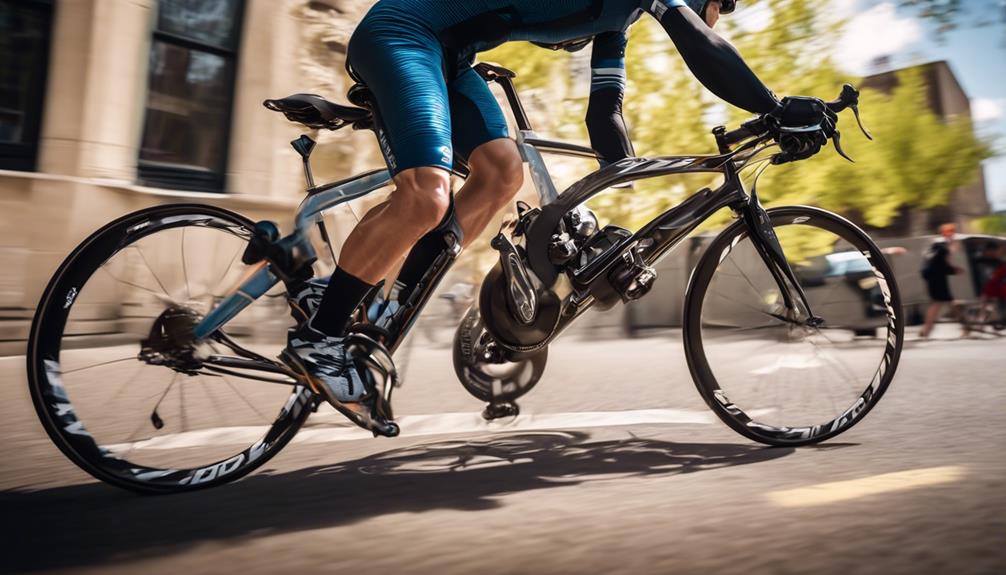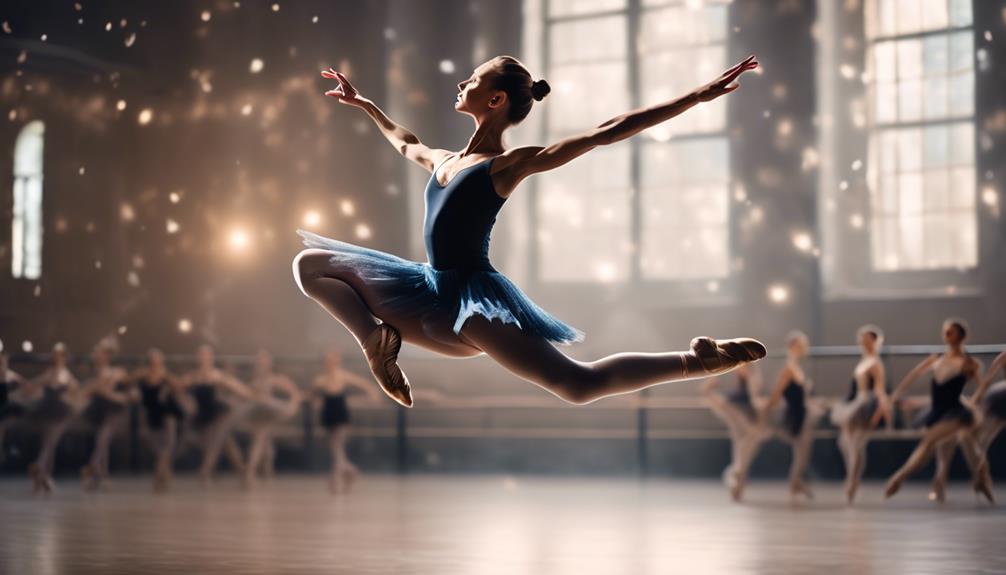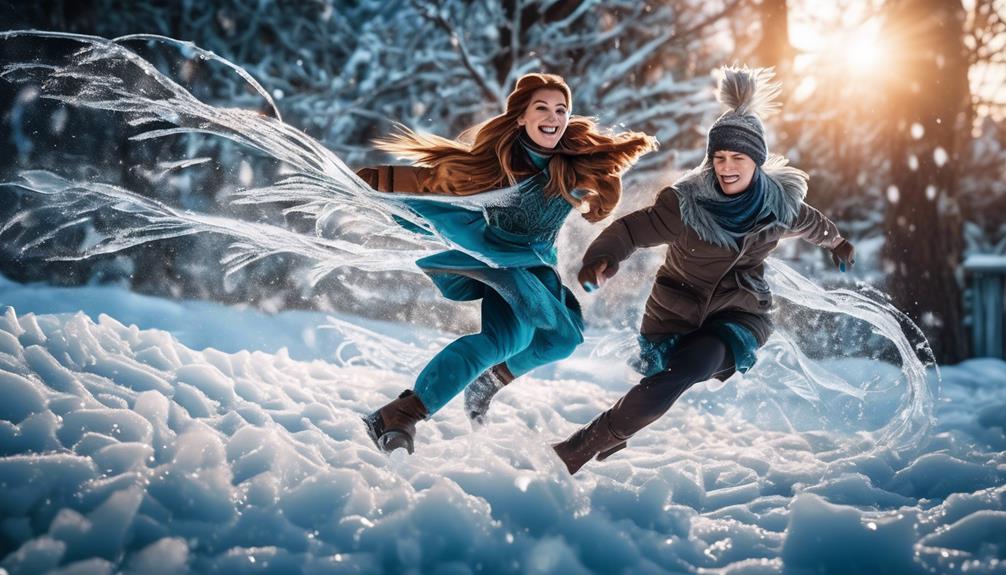Please note this post may contain affiliate links picked by me (Jay) that I have deemed may be of interest or relevant to you the reader of this.
These links do not affect the cost of the thing if you decide to purchase but i may get a little money if you choose to purchase.
For more information on my affiliate link policy click here.
Have you ever wondered how photographers capture the essence of motion in their images? The secret lies in finding the optimal shutter speed.
It's fascinating how a simple adjustment can transform a photograph, freezing a moment in time or creating a beautiful blur effect.
In this discussion, we will explore the different shutter speeds that can be used to capture motion in photography. From fast shutter speeds for capturing action to slow shutter speeds for creative blur, there are various techniques and settings to consider.
So, buckle up and get ready to uncover the secrets behind capturing motion in your photographs.
Key Takeaways
- Fast shutter speeds are essential for freezing the motion of fast-paced action and capturing sharp images in wildlife photography and low light conditions.
- Experimenting with different ISO settings can help balance light and minimize noise in low light conditions.
- Slow shutter speeds can be used creatively to create intentional blur and add energy and emotion to photographs of subjects in motion.
- Panning techniques require careful selection of shutter speeds to achieve a sharp subject against a blurred background, typically between 1/30th and 1/60th of a second.
Fast Shutter Speeds for Frozen Action
To capture the exhilarating moments of fast-paced action, utilizing fast shutter speeds is essential. When it comes to freezing motion in wildlife photography or capturing fast-moving subjects in low light conditions, having the right shutter speed can make all the difference.
A fast shutter speed refers to a quick exposure time, allowing you to capture a precise moment in time. It helps freeze the motion of your subject, whether it's a bird in flight, a running cheetah, or a speeding car. By using a fast shutter speed, you can capture the details of the subject's movement with incredible clarity.
When shooting in low light conditions, such as during dusk or in a dimly lit environment, it can be challenging to maintain a fast shutter speed without compromising image quality. However, advancements in camera technology have made it possible to push the limits and capture fast-moving subjects even in challenging lighting situations.
One technique to achieve a fast shutter speed in low light conditions is to increase the ISO setting on your camera. This allows your camera sensor to be more sensitive to light, enabling you to use faster shutter speeds. However, be mindful of the potential increase in image noise that comes with higher ISO settings.
Another method is to use a wide aperture lens. A lens with a large maximum aperture, like f/2.8 or wider, allows more light to enter the camera, enabling faster shutter speeds. Additionally, using a lens with image stabilization can further assist in capturing sharp images in low light conditions.
Slow Shutter Speeds for Creative Blur
Using slow shutter speeds can create stunning, artistic effects by introducing intentional blur into your photographs. It allows you to capture motion in a unique way, adding a sense of dynamism and creativity to your images.
Here are three ways you can experiment with slow shutter speeds to achieve incredible results:
- Using slow shutter speeds for water motion: By using a slow shutter speed, you can transform a flowing river into a smooth, dreamlike scene. The water appears silky and ethereal, creating a sense of tranquility and movement. Experiment with different shutter speeds to find the perfect balance between capturing the motion of the water while maintaining clarity in the surrounding elements.
- Experimenting with slow shutter speeds for night photography: Slow shutter speeds can also be used to capture stunning light trails at night. By leaving the shutter open for an extended period, you can capture the movement of car lights, cityscapes, or even star trails. This technique adds a dynamic and vibrant element to your night photography, creating captivating images that showcase the energy and beauty of the nighttime environment.
- Creating intentional blur for artistic effect: Slow shutter speeds can be used to intentionally introduce blur into your images for a more artistic and abstract look. This can be particularly effective when photographing subjects in motion, such as dancers or athletes. By using a slow shutter speed, you can capture the essence of their movement, creating a sense of energy and emotion in your photographs.
Experimenting with slow shutter speeds opens up a world of creative possibilities in photography. It allows you to capture the beauty of motion in a way that freezes cannot. So grab your camera, set your shutter speed to a slower setting, and let your creativity flow as you explore the fascinating world of slow shutter speed photography.
Shutter Speeds for Panning Techniques
Panning techniques in photography require careful selection of shutter speeds to effectively capture moving subjects with a sense of motion and sharpness. When using the panning technique, the photographer follows the moving subject with the camera while using a slower shutter speed. This results in a sharp subject against a blurred background, creating a dynamic and captivating image.
To achieve the best results with panning techniques, it is important to choose the right shutter speed based on the speed of the subject. Generally, a shutter speed between 1/30th and 1/60th of a second works well for panning. However, this can vary depending on the speed of the subject and the desired effect.
To help you understand the optimal shutter speeds for different scenarios, here is a table highlighting the recommended shutter speeds for macro photography and capturing water movement:
| Scenario | Shutter Speed Range |
|---|---|
| Macro Photography | 1/60th – 1/125th |
| Capturing Water Movement | 1/4th – 1/15th |
For macro photography, a faster shutter speed is recommended to freeze the motion of small subjects and capture the intricate details. On the other hand, when capturing water movement, a slower shutter speed allows for a smooth and silky effect, creating a sense of flow and movement.
Experimenting with different shutter speeds within the suggested ranges will help you achieve the desired effect in your panning shots. Remember to adjust other settings like aperture and ISO accordingly to maintain proper exposure. With practice and patience, you will master the art of panning and capture stunning images that convey the thrill and energy of the moving subjects.
Choosing the Right Shutter Speed for Sports Photography
As I shift our focus to the exciting world of sports photography, mastering the art of capturing fast-paced action requires careful consideration of the right shutter speed. In this adrenaline-filled arena, each moment is fleeting, and freezing the action is crucial to capturing the essence of the sport.
To help you achieve stunning sports photographs, here are some key factors to consider when choosing the right shutter speed:
- Low light conditions and choosing the right ISO for sports photography:
- In sports photography, lighting conditions can vary greatly. When shooting in low light situations, such as indoor arenas or evening games, it's essential to adjust your ISO settings accordingly. Higher ISO values allow for faster shutter speeds, enabling you to freeze the action even in dimly lit environments.
- Experiment with different ISO settings to find the balance between capturing enough light and minimizing noise in your images. Remember, modern cameras offer impressive high ISO performance, so don't be afraid to push the boundaries.
- The impact of aperture settings on capturing motion in sports photography:
- Aperture plays a crucial role in sports photography as it directly affects the depth of field. A wider aperture (smaller f-number) allows for a shallower depth of field, which can help isolate the subject and create a sense of speed and intensity.
- However, keep in mind that a shallow depth of field means a smaller area in focus, making it challenging to capture fast-moving subjects. To increase the chances of capturing tack-sharp images, consider using a smaller aperture (larger f-number) to expand the depth of field.
Long Exposure Shutter Speeds for Light Trails
To capture stunning light trails in your photographs, mastering the art of long exposure shutter speeds is essential. Nighttime photography and the use of long exposure go hand in hand when it comes to creating mesmerizing light trails. By extending the duration of the shutter speed, you allow more light to enter the camera's sensor, resulting in beautiful streaks of light that add a sense of motion and magic to your images.
Experimenting with light painting techniques using long shutter speeds can open up a world of creative possibilities. With the right tools and a bit of imagination, you can transform ordinary scenes into extraordinary works of art. Light painting involves using various light sources, such as flashlights or LED lights, to paint or draw in the air while the camera's shutter is open. The longer the exposure, the more time you have to create intricate light trails and shapes.
When working with long exposure shutter speeds for light trails, it's important to stabilize your camera to avoid unwanted blur. Using a tripod or finding a stable surface to place your camera on will ensure sharpness in the rest of your image, while still allowing the light trails to shine. Additionally, using a remote shutter release or the camera's built-in timer can further reduce camera shake.
Don't be afraid to experiment and push the boundaries of what's possible with long exposure photography. With practice and patience, you'll be able to capture breathtaking light trails that will leave viewers in awe. So grab your camera, venture into the night, and let your creativity shine through the magic of long exposure shutter speeds.
Frequently Asked Questions
What Is the Recommended Shutter Speed for Capturing Motion in Wildlife Photography?
In wildlife photography, the recommended shutter speed for capturing motion is crucial. To freeze the fast-paced movement of animals, a higher shutter speed is necessary. It allows you to capture the details of their actions without any blur.
The optimal shutter speed for wildlife photography depends on the specific subject and conditions. Experimenting with different speeds is key to finding the perfect balance between freezing motion and maintaining image quality.
How Can I Achieve a Sense of Motion in My Landscape Photography Using Shutter Speed?
To achieve a sense of motion in landscape photography using shutter speed, I've discovered some amazing techniques. By experimenting with slower shutter speeds, I can capture the flowing movement of waterfalls or the gentle sway of grass in the wind.
Alternatively, using faster shutter speeds freezes the action, creating a dynamic and energetic feel to the image. It's like painting with time, allowing me to convey the beauty and liveliness of nature in a still photograph.
Are There Any Specific Considerations When Using Slow Shutter Speeds for Capturing Waterfalls and Flowing Rivers?
When using slow shutter speeds to capture waterfalls and flowing rivers, there are a few things to keep in mind.
Firstly, make sure to use a tripod to avoid any camera shake.
Secondly, experiment with different shutter speeds to achieve the desired effect. For waterfalls, a longer shutter speed will create a smooth, silky effect, while a faster shutter speed can freeze the motion.
Lastly, consider using a neutral density filter to control the amount of light entering the camera, allowing for longer exposures.
What Are the Best Shutter Speeds for Capturing Fast-Moving Subjects in Low Light Conditions?
In low light conditions, capturing fast-moving subjects can be a challenge. But fear not, there are techniques that can help freeze the action and create stunning images.
Recommended shutter speeds for action sports in low light conditions would typically be around 1/500th of a second or higher, depending on the speed of the subject. By using high shutter speeds, you can effectively freeze the motion and capture the intensity of the moment, even in challenging lighting situations.
Can You Provide Some Tips on Using Long Exposure Shutter Speeds to Capture Star Trails in Astrophotography?
When it comes to capturing star trails in astrophotography, using long exposure shutter speeds is key. By keeping the shutter open for an extended period of time, you can capture the movement of the stars across the night sky, creating stunning light trails.
To achieve this, make sure to use a sturdy tripod to keep your camera steady, and set your shutter speed to a few minutes or longer. Experiment with different exposure times to find the perfect balance between capturing the movement and avoiding overexposure.
Conclusion
In conclusion, finding the optimal shutter speed for capturing motion in photography is crucial.
With fast shutter speeds, you can freeze action and capture every detail.
Slow shutter speeds allow for creative blur, adding an artistic touch to your photos.
Panning techniques require specific shutter speeds to create dynamic images.
When it comes to sports photography, choosing the right shutter speed is essential to capture the fast-paced action.
Lastly, long exposure shutter speeds can produce stunning light trails.
So, experiment with different shutter speeds and unleash your creativity!


